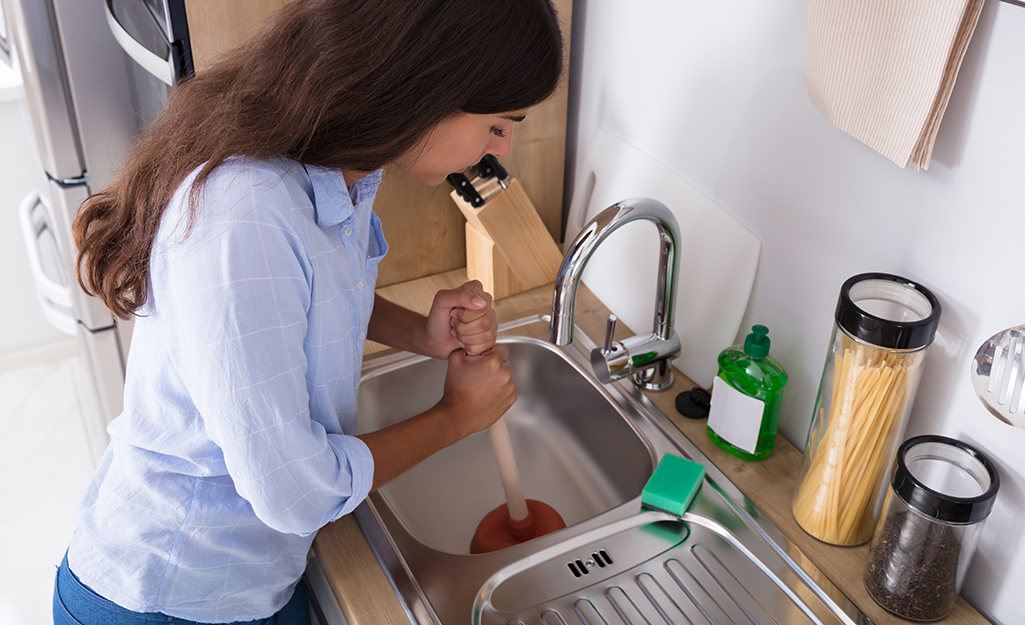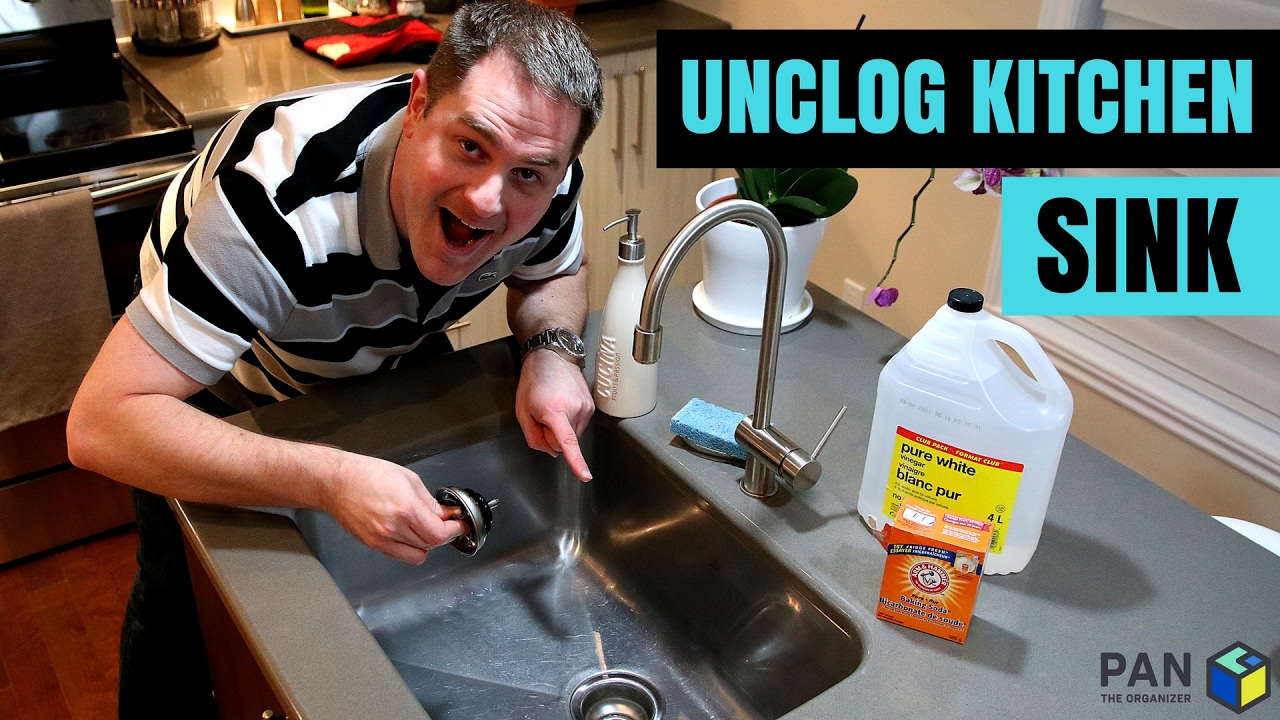Melvin is an expert for portable products.The site is for sharing everything about portable products for online buyers.
To unplug a kitchen sink, start by removing any debris from the drain, then use a plunger or baking soda and vinegar solution to unclog it. An plugged kitchen sink is a common household problem that can be frustrating to deal with.
When the sink is clogged, it can disrupt your daily activities, making it difficult to wash dishes or prepare meals. However, there are simple and effective methods to quickly unplug the kitchen sink. By following a few easy steps, you can clear the clog and have your sink back in working order in no time.
We will explore the different techniques you can use to unplug your kitchen sink, such as using a plunger or a combination of baking soda and vinegar. These methods are cost-effective, environmentally friendly, and save you from calling a plumber.
Getting Started With Unplugging The Kitchen Sink
Getting Started with Unplugging the Kitchen Sink
Determining the cause of the clog: The first step in unblocking a kitchen sink is to identify the cause of the clog. It could be due to food particles, grease buildup, or foreign objects stuck in the drain. Use a flashlight to inspect the drain and remove any visible debris.
Gathering the necessary tools and materials: Once you have determined the cause of the clog, gather the tools and materials needed for the task. This may include a plunger, plumber’s snake, bucket, rubber gloves, and a drain cleaner solution.
Preparing the area for work: Before starting the unclogging process, it is important to prepare the area. Remove any dishes or utensils from the sink and surrounding countertops. Place a bucket under the sink to catch any water that may overflow during the unclogging process. Put on rubber gloves to protect your hands from any potential mess.
Removing Debris From The Sink
To unplug the kitchen sink, it is essential to remove debris that is causing the blockage. First, clear out any visible obstructions by using suitable tools such as a plunger. Firmly place the plunger over the drain and create a tight seal before vigorously plunging up and down. This action will help dislodge the blockage and clear the drain. Additionally, flushing hot water down the drain can also assist in clearing the obstruction. Boil water in a kettle or microwave and carefully pour it down the drain. The hot water will help break down and wash away any remaining debris. Repeat these steps as necessary until the sink drains smoothly. By regularly checking and maintaining the sink, you can avoid future blockages and ensure proper functioning of your kitchen sink.
Using Natural Remedies To Unclog The Sink
When dealing with a clogged kitchen sink, there are several natural remedies that can be used to effectively unclog the drain. One method involves pouring boiling water down the drain. Boiling water helps to break down and dissolve any grease or oil buildup that may be causing the clog.
Another effective method is to use a mixture of baking soda and vinegar. Start by pouring half a cup of baking soda down the drain, followed by half a cup of vinegar. The mixture will create a foaming action that helps to dislodge and remove the clog.
Additionally, a salt and boiling water solution can be used. Mix half a cup of salt with a pot of boiling water and carefully pour it down the drain. The salt acts as an abrasive agent, helping to break up the clog and clear the pipe.
By using these natural remedies, you can effectively unclog your kitchen sink without relying on harsh chemicals or costly plumbing services.
Trying Chemical Solutions
htmlSelecting An Appropriate Drain Cleaner
When dealing with a clogged kitchen sink, one possible solution is to try using a drain cleaner. It is important to select the right type of cleaner for the job. Look for a product that is specifically designed to tackle kitchen sink clogs. Read the labels and choose one that clearly states it is suitable for removing grease and food particles.
Following Instructions And Safety Precautions
Before using any chemical drain cleaner, carefully read and follow the instructions provided by the manufacturer. Wear protective gloves and goggles to ensure safety. Many drain cleaners are caustic and can cause harm if not handled properly. Keep the area well-ventilated while working with these chemicals, and never mix different drain cleaners together.
Allowing The Chemical To Work
After pouring the drain cleaner into the sink, let it sit for the recommended amount of time. Usually, this is around 15 to 30 minutes. During this period, it is important to keep the sink unused to allow the chemical to work effectively on the clog. Afterwards, flush the sink with hot water to clear any remaining residue and check if the blockage has been successfully removed.
Clearing The Trap And Piping
“How to Unplug the Kitchen Sink”
- Locating and removing the trap
- Inspecting the pipes for blockages
- Using a plumbing snake to clear internal clogs
First, locate the trap, which is usually located beneath the sink. Place a bucket or towel underneath to catch any water that may spill out during the process. Slowly loosen the slip nuts on each end of the trap using a pipe wrench or pliers. Once loose, carefully remove the trap and empty any debris into the bucket or trash. Clean the trap thoroughly to remove any buildup.
After removing the trap, inspect the pipes for any visible blockages. Examine the pipe openings and use a flashlight if needed. Look for any debris, such as food particles or grease, that may be causing the clog. If you notice any blockages, use a small brush or cloth to remove them. It’s important to ensure that the pipes are clear before proceeding.
If the blockage is not visible or easily removable, a plumbing snake can be used. Insert the snake into the pipe opening and carefully guide it through, rotating as necessary to break up the clog. Continue feeding the snake until you feel resistance, then retract it slowly. Repeat the process as needed until the clog is cleared. Once clear, run hot water to flush away any remaining debris.
Seeking Professional Help
Recognizing when to call a plumber:
When faced with a stubbornly clogged kitchen sink, it may be time to seek professional help. Recognizing the signs that indicate the need for a plumber can save you time and frustration. Slow draining or standing water are common indications of a deeply lodged clog that requires professional attention. Unusual smells emanating from the drain can also indicate a deeper problem within the plumbing system. In these cases, attempting to fix the issue independently may lead to further damage.
Researching and selecting a reputable plumber:
Choosing the right plumber is essential to a successful resolution. Start by researching local plumbers who specialize in kitchen sink repairs. Reading customer reviews and comparing prices will help you narrow down your options. Look for plumbers who are licensed, insured, and have positive reviews from previous customers.
Communicating the issue effectively:
When contacting a plumber, clearly explain the problem you are experiencing, emphasizing any specific symptoms or concerns. Providing detailed information will help the plumber diagnose the issue more accurately and ensure they bring the necessary tools and equipment to address the problem efficiently.
Preventing Future Sink Clogs
Preventing future sink clogs is crucial for maintaining a clean and functional kitchen. One important step is to properly dispose of food waste. Avoid letting large food particles go down the drain as they can easily cause blockages. Using a drain guard or strainer can help catch these particles, preventing them from entering the pipes. Additionally, regularly maintaining the sink and pipes is essential. Cleaning the sink and removing any residue or build-up can prevent clogs from occurring. Flushing the pipes with hot water and vinegar once a month is also an effective way to keep the pipes clear. By following these simple steps, you can keep your kitchen sink clog-free and avoid the hassle of dealing with blocked drains in the future.

Credit: www.homedepot.com
Frequently Asked Questions On How To Unplug The Kitchen Sink
How Can I Unclog My Kitchen Sink Without Calling A Plumber?
You can unclog your kitchen sink without calling a plumber by using a plunger, vinegar and baking soda, or a combination of salt and boiling water. These DIY methods are effective in breaking down and removing the clog, saving you the cost of hiring a professional.
What Are Some Common Causes Of Kitchen Sink Clogs?
Common causes of kitchen sink clogs include food debris, grease buildup, soap scum, and small objects accidentally dropped into the drain. These materials can accumulate over time, leading to a blockage that restricts proper water flow and causes the sink to clog.
How Do I Remove A Solid Object Stuck In The Kitchen Sink Drain?
To remove a solid object stuck in the kitchen sink drain, you can try using long-handled pliers or tweezers to carefully retrieve it. If this doesn’t work, you may need to dismantle the trap under the sink to access the object.
Remember to turn off the water supply before attempting any DIY removal.
Are There Any Preventive Measures To Avoid Future Kitchen Sink Clogs?
Yes, there are preventive measures to avoid future kitchen sink clogs. Install a drain strainer to catch food particles, avoid pouring grease down the drain, run hot water after each use to flush out any residue, and periodically use a mixture of baking soda and vinegar to maintain a clean and clog-free sink.
Conclusion
Unclogging a kitchen sink can be a relatively simple task with the right techniques and tools. By following the steps outlined in this blog post, you can save both time and money by avoiding the need for a professional plumber.
Remember to take preventative measures in the future to keep your kitchen sink running smoothly. Happy unclogging!

Melvin is an expert for portable products.The site is for sharing everything about portable products for online buyers.

